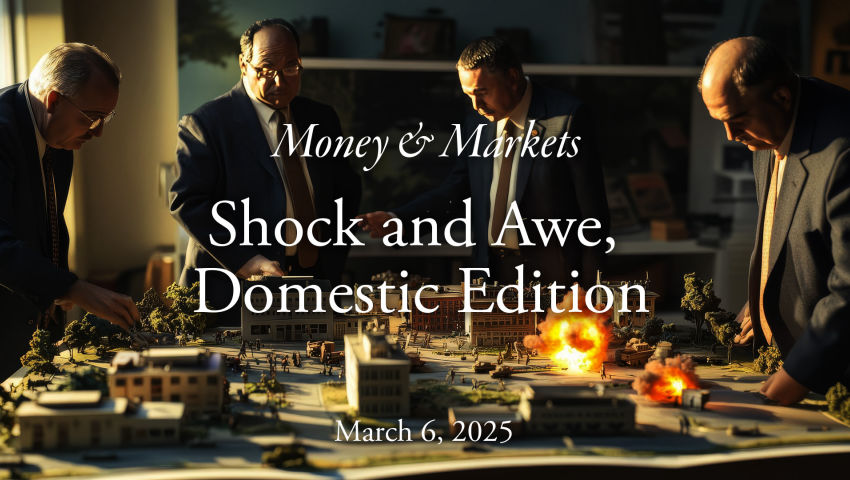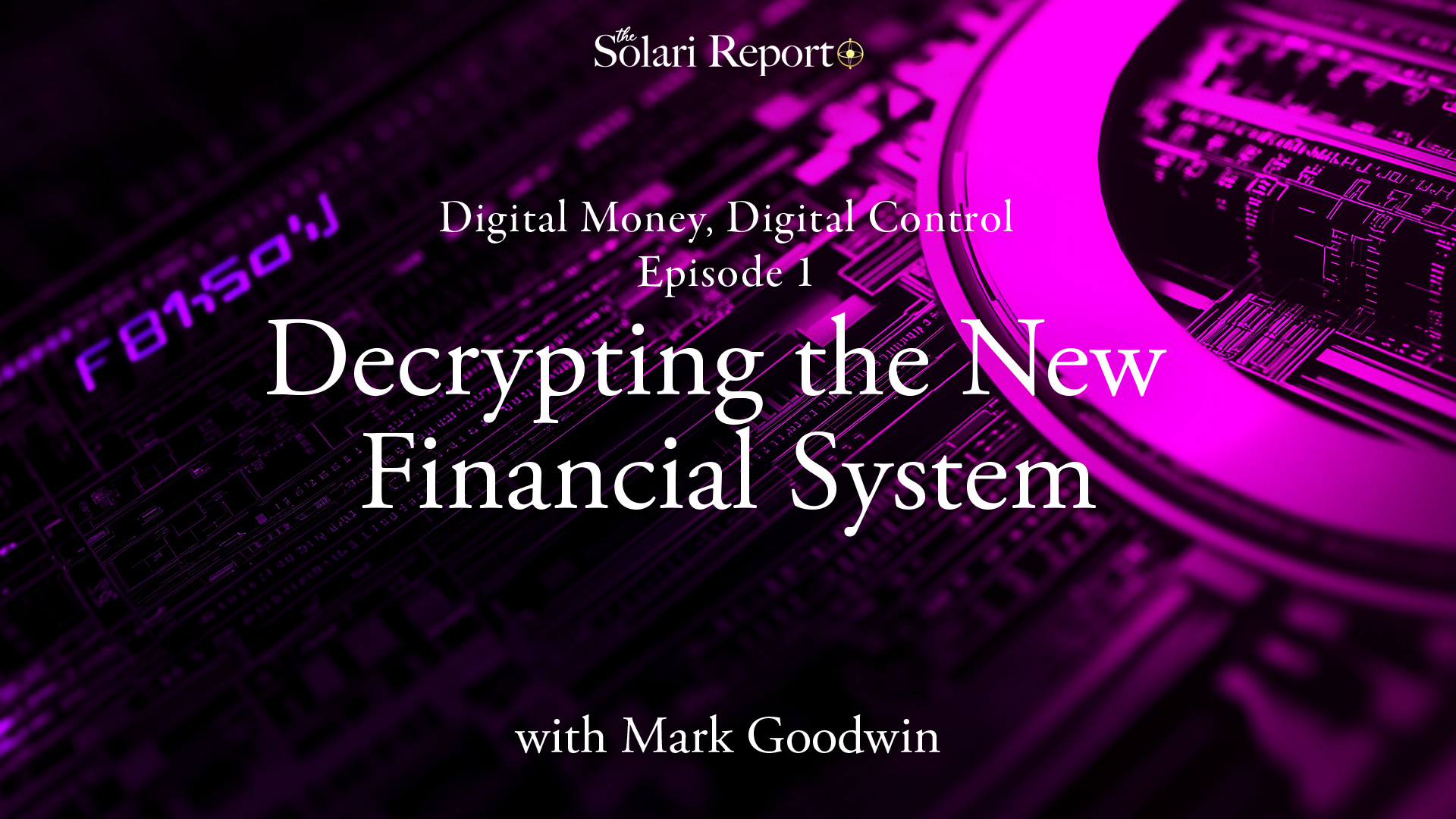“Interest-rate swaps are a tool used by big cities, major corporations and sovereign governments to manage their debt, and the scale of their use is almost unimaginably massive. It’s about a $379 trillion market, meaning that any manipulation would affect a pile of assets about 100 times the size of the United States federal budget.” ~ Matt Taibbi in 2013
By Catherine Austin Fitts
This week on the Solari Report, Rob Kirby of Kirby Analytics joins me to discuss the role of interest rate swaps in pushing interest rates down and debasing financial markets, the allocation of our money and labor and our society. This exchange will follow up on our discussion of the role of the US Exchange Stabilization Fund in market intervention and covert financial flows.
Rob is a unique figure in the financial world. He traded derivatives with several large financial institutions. Since founding Kirby Analytics, Rob has consistently educated the independent media about the role of derivatives in centralizing political control and draining personal financial wealth. This financial topic is complex and sophisticated, and Rob makes it accessible to all of us.
In Money & Markets this week I will discuss the latest in financial and geopolitical news, including what the French election means to Europe, the future of the Euro, and global financial markets.
In Let’s Go to the Movies, I will review The Eagle, a haunting Danish TV series named after a half-Icelandic half-Danish police officer named Hallgrim Ørn Hallgrimsson, nicknamed “Ørnen” (the eagle). Hallgrim is lead investigator for an international criminal investigative unit focused on cross-border transnational crimes that takes Hallgrim and his colleagues to Norway, Sweden, Denmark, Russia, and Germany, including interactions with American intelligence agents operating in Europe.
Make sure to e-mail or post your questions for Ask Catherine. Talk to you Thursday!
Related Reading:





Catherine, I was looking for Rob’s “Understanding Derivatives” as well, so looking forward to that. What a fantastic episode! In the banking world derivatives are pushed hard to small community banks, some who prefer to keep their profit model simple and solid. And sadly, they are not limited to interest rate swaps. This said, derivatives are peddled intensely as a safety hedge at accounting conferences and the like . The problem is, many do not understand what they are getting into, and few seem to understand counterparty risk can be gross notional value, not merely a net notional value.. In the agriculture world, derivatives have been a Godsend, yet when abused, derivatives can extract real value out of real things. Derivatives, when abused, have the interesting feature of diverting value out of real things and into private hands. Ironic that the ISDA is now planning to remove the classifications of “ineffective” and effective hedges from their terminology. In the gold and silver world, I might think there are a few ineffectively matched hedges.
Wow. That is scary. “In the banking world derivatives are pushed hard to small community banks, some who prefer to keep their profit model simple and solid.”
Let’s hope the community banks see past it.
Where can I find a link to Rob’s piece “Understanding Derivatives” ?
Andrew: Apologies. I will make sure our webmaster posts here first thing on Monday. Catherine
Andrew:
It is now posted in subscriber links. Deepest apologies – again!
Catherine
Dear Catherine,
There is no reason for you to apologise. This is such an important topic, but unfortunately for most people it is something too arcane and esoteric to contemplate, let alone to look into so the scam continues with impunity. The rug, so to say, is being pulled out from under our very noses.
In the meantime I have been able to find the piece “Understanding Derivatives” and after having studied it, it seems as though the interest swaps the big 5 banks are holding are not based upon any fixed or floating position. So, if I understand correctly, in effect the swaps which the banks hold are “naked”. That explains why there is an embedded bond trade in the swap. Is this correct?
I have followed Rob’s example but got stuck on page 9 with the all-in rate being 5.18%. I can’t follow this number. Shouldn’t it be 2.18% instead?
This then raises the questions:
– Does this have anything to do with the huge purchases of treasuries little Belgium was making that I read about a few years ago?
– Where did the banks get the cash to pay for these bonds? What debit do they post to offset the credit? Do these bonds go on the bank’s balance sheet?
– What will happen when the bonds which the banks have bought in the cash market mature in 5 years? Will the Treasury redeem them for cash?
What a neat little trick this whole thing is. And to think I have to do work to get my dollars.
On reflection, this must be the biggest scam the world has ever seen!
Then, last night I followed you link and watched “Unacknowledged”. Wow! This gave hands and feet to another huge scam you have been talking about for years, namely the black budget and the breakaway civilisation.
Thank you again, Catherine, for continuing to amaze me and open my eyes.
Regards,
Andrew
PS: I realise that this is beyond the scope of your interview, but I would also like to get my head around the other big derivatives market, namely currency swaps. I am aware of how, for example, Goldman Sachs used a “fictitious” F/X rate to give Greece an off-balance-sheet loan.
In Rob Kirby’s YouTube interview “Financial System Totally Criminal” he talks about how “currency swaps give the central bankers flexibility in propping up if there should be a run any of the member currencies they can quickly mobilise resources in one of their friendly neighbour’s currencies to shore up the deficiency which might be arising in one place. So it is basically a way of trying to make this fundamentally broken and insolvent regime of fiat currency look strong by allowing one member to prop up the other member’s currency.”
Any idea where can I find the mechanics behind this type of transactions? Then I will be fit to pass on the word.